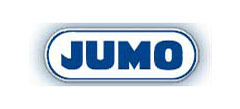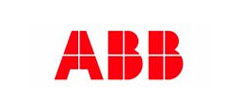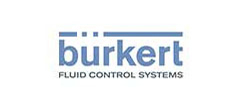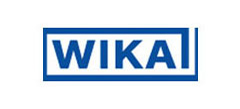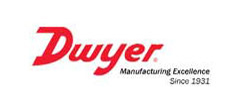The benefits of pneumatic actuators arise from their simplicity. Most pneumatic aluminum cylinders have optimal maximum pressure. The pneumatic drive generates precise linear movement, ensuring accuracy and repeatability in a very high range.
PROCESS CONTROL VALVES
Process Control Valves
A Trusted Name In Process Instrumentation & Industrial Valves & Fittings Instrumentation Ball Valves, Instrumentation Hydraulic Check Valve, Instrumentation Gauge valves, Instrumentation Butterfly Valve are manufactured to meet the highest standards of quality and dependability.
Pneumatic Actuators
Pneumatic linear actuators consist of a piston inside a hollow cylinder. Pressure from an external compressor or manual pump moves the piston inside the cylinder. As pressure increases, the cylinder moves along the axis of the piston, creating a linear force. The piston returns to its original position by either a spring-back force or fluid being supplied to the other side of the piston.

Pneumatic Actuators
Typical applications of pneumatic actuators include areas with extreme temperatures. When it comes to safety and inspection, using air, pneumatic cylinders avoid the use of hazardous materials. They meet the requirements of explosion protection and machine safety because they do not cause magnetic interference due to the lack of motors.
Pneumatic Ball Valve
Ball valves enjoy massive popularity thanks to their compact and low maintenance design that requires no lubrication while still offering users a tight seal with minimal torque. Ball valves are also the least expensive option when it comes to choosing among all of the valve arrangement types. The biggest disadvantage of ball valves is that most designs have poor throttling characteristics that can cause the seat of a ball valve to easily erode. This has been remedied somewhat with the trunnion mounted ball valve design, but should still be a consideration for those looking at ball valves for situations where high throttling is a must. Ball valves are also commonly chosen thanks to their ability to be successful used across a range of applications and markets. As mentioned before, ball valves are a big hit with the oil and natural gas industry, but also find a place in many manufacturing sectors, chemical storage, and even residential uses.

Pneumatic Ball Valve
- Offers leak-proof service.
- Fast open and close service.
- In comparison to gate valves has a very small dimension.
- It is light weight in comparison to gate valves.
- Has a multi-way design flexibility to reduce the number of valves required.
- Provides reliable and safe service under high temperature and pressure conditions.
- Requires less force to control in comparison to gate and globe valves.
Gate valves are suitable to use in high temperature and pressure conditions. They are used for on-off applications
Pneumatic Butterfly Valve
Butterfly valves are quarter-turn rotary motion valves used as throttling valves to control flow through a system. They can be used with many different media. Butterfly valves offer several advantages including quarter-turn, openness for less plugging, and good control capabilities. They may be used in a wide variety of chemical services, are available with small dimensions allowing for use in areas where space is limited, and allow a high coefficient of flow. Disadvantages include difficulty cleaning internal parts; therefore they should be avoided in situations that call for sterile, medical or food processing applications. Additionally, some styles may have difficulty dispensing slurries.

Pneumatic Butterfly Valve
- Quarter turn
- Open port
- Used with chemical or corrosive media
- Throttling limited to low differential pressure
- Compact, lightweight design
- Available in large sizes
- Low pressure drop and high-pressure recovery
- High coefficient of flow
Cooling water, air, gases, fire protection etc. Slurry and similar services Vacuum service High-pressure and high-temperature water and steam services Compressed Air or Gas Applications
Pneumatic Control Valve
Many pneumatic devices use a nozzle and flapper system to give a variation in the compressed air signal.A typical pneumatic control valve is shown in Figure . It can be considered as made up of two partsŌĆöthe actuator and the valve. In the arrangement shown a flexible diaphragm forms a pressure tight chamber in the upper half of the actuator and the controller signal is fed in. Movement of the diaphragm results in a movement of the valve spindle and the valve. The diaphragm movement is opposed by a spring and is usually arranged so that the variation of controller output corresponds to full travel of the valve.
The valve body is arranged to fit into the particular pipeline and houses the valve and seat assembly. Valve operation may be direct acting where increasing pressure on the diaphragm closes the valve. A reverse acting valve opens as pressure on the diaphragm increases. The diaphragm movement is opposed by a spring which will close or open the valve in the event of air supply failure depending upon the action of the valve.

Pneumatic Control Valve
- Rapid and effective functioning
- Absolutely reliable
- Durable service life
- The design is Compact, to facilitate minimal space consumption
- Minimal pressure drop
Lube Oil (Compressor Expander) Water fountains and smoke making machines High Pressure Air Rare Gases H2 ŌĆō Test Areas Engine Test Skid Cryogenic Gas
Solenoid Valve
A Solenoid valve is used wherever fluid flow has to be controlled automatically. They are being used to an increasing degree in the most varied types of plants and equipment. The variety of different designs which are available enables a valve to be selected to specifically suit the application in question. Solenoid valve is a control units which, when electrically energized or de-energized, either shut off or allow fluid flow. The actuator takes the form of an electromagnet. When energized, a magnetic field builds up which pulls a plunger or pivoted armature against the action of a spring. When de-energized, the plunger or pivoted armature is returned to its original position by the spring action.

Solenoid Valve
Solenoid valves are extremely versatile. They can be used in many diverse and unique system applications handling air, water, oil, gas, steamŌĆ” pretty much any liquid or gaseous substance. Another thing thatŌĆÖs great about solenoid valves is that theyŌĆÖre a very efficient means of automatic flow control for liquids and gases. These types of valves require little wiring, expense, and effort when compared to other valves.
Solenoid valve is a control units which, when electrically energized or de-energized, either shut off or allow fluid flow. The actuator takes the form of an electromagnet. When energized, a magnetic field builds up which pulls a plunger or pivoted armature against the action of a spring. When de-energized, the plunger or pivoted armature is returned to its original position by the spring action.
Motorised Valves
Motor Operated Valve (MOV) is an important item of Plant & Piping system. These valves are generally of large size and are used for different applications such as Pump discharge etc. Motor Operated Valves are often called as On-Off valves as the motors serve the purpose of fully opening or fully closing valves in pipelines. For example, cooling water lines, process pipelines where controlling of fluid is not required, motor operated valves can be used to fully allow or fully stop the fluid flow. These valves are not used for throttling purposes as they serve mainly On-Off service application.

Motorised Valves
- Provide better positioning performance
- Obtain greater control flexibility
- Eliminate fluid leaks
- Improve energy efficiency
- Maintain the robustness and reliability of existing technologies
Whenever frequent operation is required. Valves located in remote, inaccessible or dangerous places. The motorized control valve / motor operated valves are generally for full opening and full closing applications. However, there are places where they are also used for position control.
Pneumatic Accessories
Pneumatic fittings are parts used to connect sections of pipe, tube, and hose in pneumatic (pressurized gas) systems. Compared to hydraulic fittings, pneumatic fittings are typically characterized by tighter seals and lower pressure requirements. They are frequently used in pneumatic logic control systems and instrumentation.

Pneumatic Accessories
- A pneumatic device has the advantages of simple structure, portability, simple installation and maintenance. Medium for the air, compared with the hydraulic medium is not easy to burn, so the use of safety.
- The working medium is an inexhaustible supply of air, air itself is not money. Exhaust gas treatment is simple, no environmental pollution, low cost.
- Output force and speed regulation is very easy. The actions of the cylinder speed is generally less than 1M / S, ratio of hydraulic and electrical means fast action.
- High reliability, long service life. Electrical components of the effective action frequency of about a million times, but the common electromagnetic valve 30000000 times larger than life, some good quality valve more than 200000000 times.
- The use of air compression, can store the energy, to achieve centralized gas supply. Short time release energy, so as to obtain the intermittent movement in high speed response. Can realize the buffer. On the impact load and live load and has a strong ability to adapt. Under certain conditions, can make the pneumatic device having self holding capacity.
- Pneumatic control with fire prevention, explosion-proof, moisture-proof ability. Compared with the hydraulic, pneumatic mode may be used in high temperature applications.
- Due to the air flow loss is small, the compressed air can be concentrated supply, long-distance transmission.
Pneumatic fittings provide the essential link between tubes, hoses and other components in a pneumatic system. Air fittings feature tighter seals and have lower pressure requirements than hydraulic fittings and are typically offered in various connector types. In addition to connecting pneumatic components and stopping the flow of unused ports, miniature fittings are also used to control air flow pressure and directional flow.
Manual Valve
Manual valve actuators do not require an outside power source to move a valve to a desired position. Instead, they use a handwheel, chainwheel, lever, or declutchable mechanism to drive a series of gears whose ratio results in a higher output torque compared to the input (manual) torque. Most manual valve actuators use worm gears, mechanical devices that transmit motion between non-intersecting right-angle axes.

Manual Valve
The advantage of using a manual valve actuator is that the devices are inexpensive, reliable and do not require a power source. They are usually self-contained and since they use the same motion to open and close it is often easy to spot an error or cause of a discrepancy. The disadvantage is that they are not automated and therefore need to be manually controlled each time.
Wherever the process is not critical. Wherever manual operation is necessary.
Pressure Reducing Valve
Pressure Reducing Valves are designed to reduce incoming water or steam pressure to a safer constant predetermined downstream level. Depending on the type of valve, the downstream pressure is established by a pressure adjustment setting on the valve or by an external sensor. Pressure Reducing Valves are utilized in residential, commercial, institutional, and industrial applications.

Pressure Reducing Valve
- Ensures reliable and stable pressure for household water systems
- Prevents ŌĆ£screamingŌĆØ noise caused by high flow velocities
- Reduces risk of water leaks
- Stops loud, banging water hammer caused by built-up water pressure from closing taps
- Automatically conserves water when used in high pressure areas
- Reduces the energy required to heat water for showers, dishwashers, washing machines, etc.
- Limits water waste by lowering flow rates
- Protects water-using appliances and fixtures by reducing the amount of water pressure on them
- Saves money on water costs
Pressure reducing valves are used to maintain a constant reduced pressure in a hydraulic branch circuit regardless of pressure variations. Applications include branch circuits of a hydraulic system. These valves are also used in applications that need to be adjustable so that a system can operate within various ranges.

